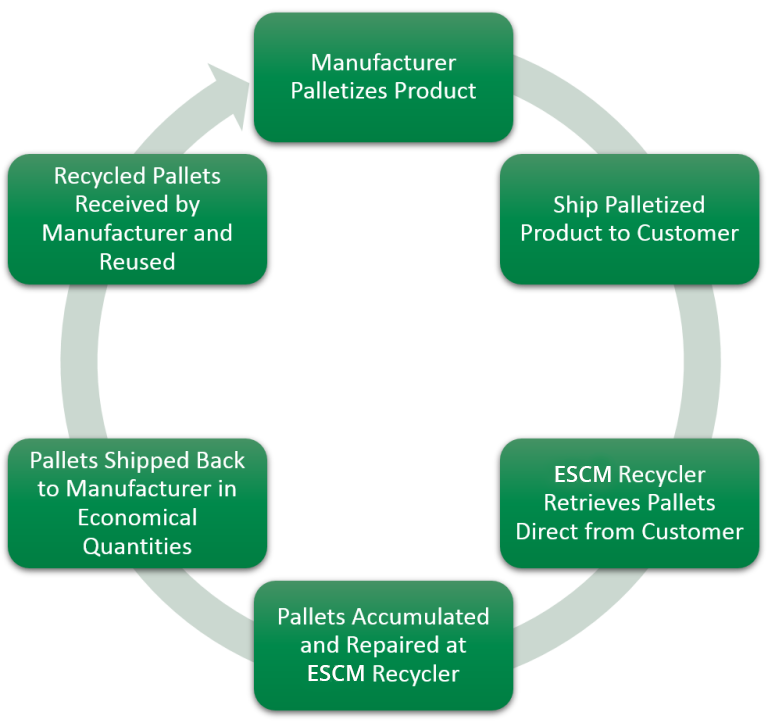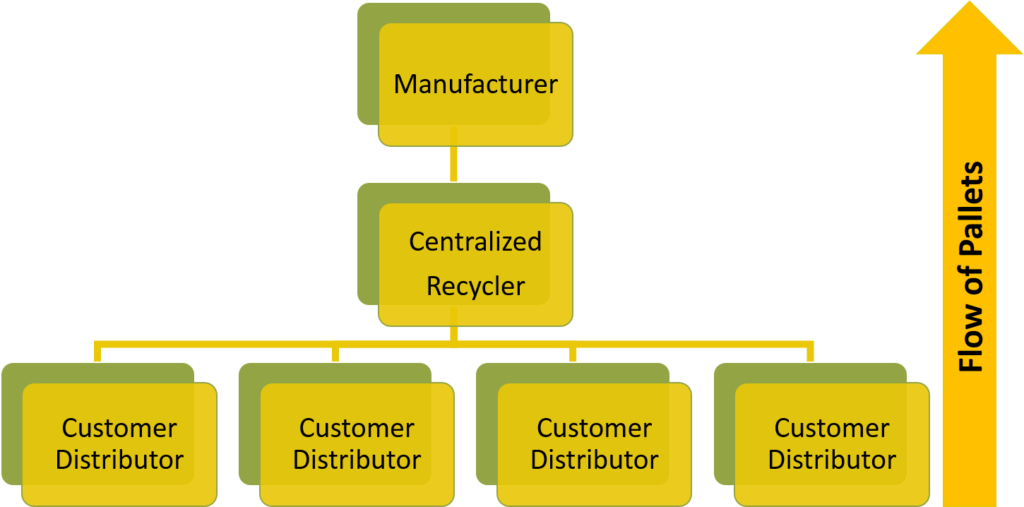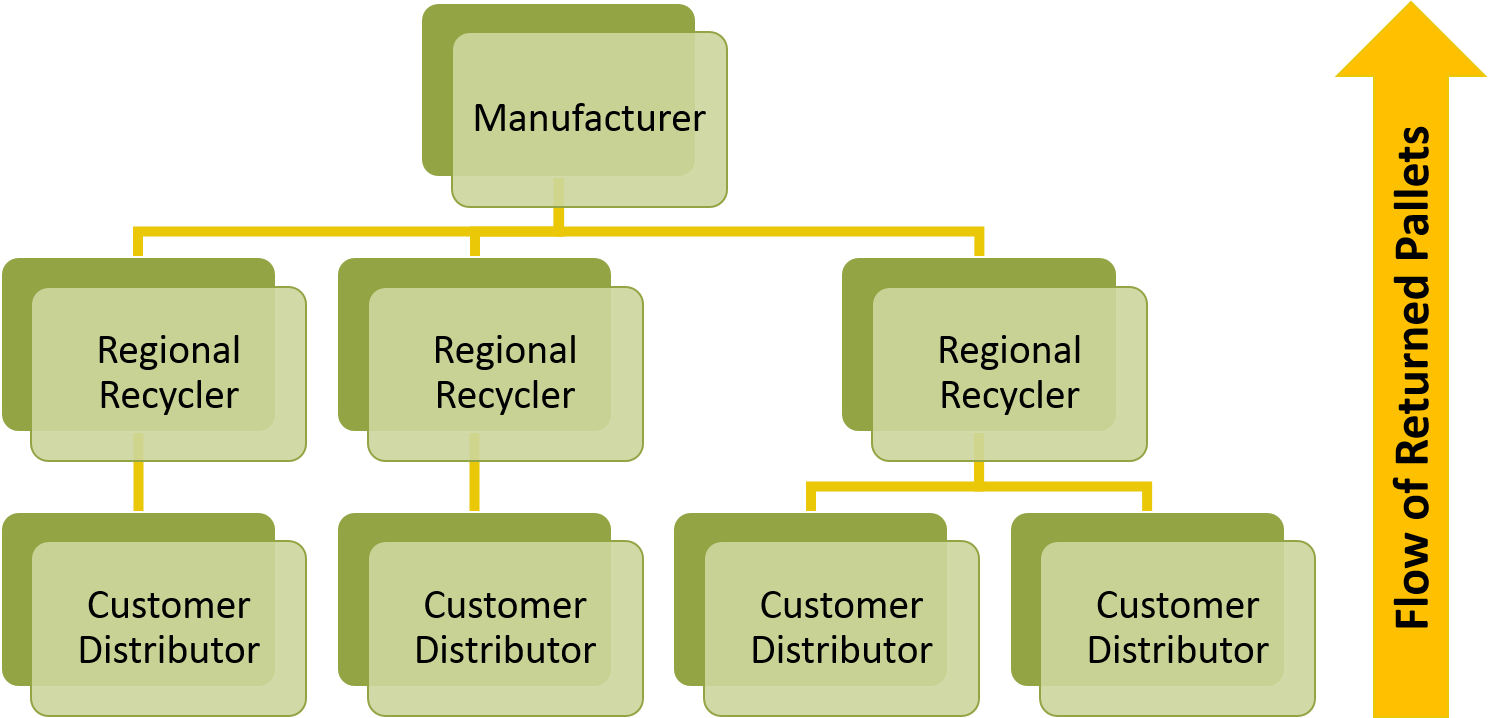Reverse Pallet Logistics
Home /
Reverse Pallet Logistics
Reverse Pallet Logistics
Pallet returns management and reverse logistics are for all operations related to the reuse of products and materials and returning them into your supply chain. It’s the process of moving goods from their typical final destination for the purpose of capturing value or achieving proper disposal.
Recovery, Repair, and Return
Asset recovery or retrieval is a key factor in maintaining a competitive advantage for your company. Whether you have limited facility space or ship large volumes of pallets, you can depend on Essential Supply Chain Management closed loop management system.
We fix the pallet boards that are broken and return it to manufacturing
So you don’t have to buy a whole new pallet. It helps lower costs, and reduces your lead time because you do not have to source and ship new raw lumber to build pallets.
We offer prompt, reliable recovery and return of your pallets and other returnable packaging items. This allows your company to eliminate packaging waste, saving both time and money. Reusing packaging products improves the environment and increases profitability. Our program offers a well-received post-sales service benefit to your customers.
Proprietary Pallet Recovery Cycle
Essential Supply Chain Management specializes in recovering proprietary shipping platforms for customers all over the United States. The overall pallet returns management and reverse logistics process can be broken down into six steps that create a “virtuous cycle.”
The pallet recovery cycle maximizes value in the supply chain by facilitating the reuse of returnable packaging assets. The recovery cycle seeks to balance service and value for both you and your customers. Think of Essential Supply Chain Management asset recovery as an extension of your own logistics group; we manage the recovery of pallets for you!

Centralized Recovery Network
Pallet Recovery can be broken down into two models that serve the same purpose but offer different costs and benefits.
The Centralized Network Model maximizes efficiency and quality at the repair centers, as the pallet repairs are done at a minimum number of CENTRALIZED facilities – think economies of scale. The trade-off with this type of model is the increased freight cost associated with hauling pallets further distances from the distributor to the recycler. The centralized locations are placed in close proximity to the manufacturer to offer them the best service.

Decentralized Recovery Network
The Decentralized Network Model maximizes customer service for the distributors and minimizes overall freight cost by placing repair centers close to the distributors they service. This model requires more recyclers and may give up operational efficiencies at the recyclers in favor of freight savings.
Improved Recovery Network
Our main goal in pallet recovery is to provide a network of central and decentralized locations companies can go to for quick pallet fixes. Centralized locations are limited areas where pallets can be dropped off and fixed, but they may be far. While these locations are closer to manufacturers, they are limited, and the trade-off is increased freight costs.
A decentralized recovery network for pallets has more locations, but the takeaway is that while pallets will only be repaired on a fixed budget. It’s crucial to get in on the network so you know which service is the right option for you and your company.

Request A Consultation!
Reverse pallet logistics is a crucial aspect of the pallet industry, particularly in the context of sustainability and cost efficiency. This process involves the retrieval and reuse of pallets after they have reached their final destination. Here’s how reverse pallet logistics functions in the pallet industry:
Pallet Returns Management
Reverse logistics begins with the management of pallet returns. After goods are delivered and unloaded, the pallets must be collected and transported back to a central location or directly to the supplier. This process requires careful coordination to ensure that pallets are not lost or discarded, which would result in unnecessary waste and expense.
Recovery, Repair, and Return
Once the pallets are collected, they are inspected for damage. Companies like Essential Supply Chain Management have systems in place to repair broken pallet boards, allowing the pallets to be returned to the manufacturing cycle without the need to purchase new ones. This reduces costs and lead times associated with sourcing new lumber.
Proprietary Pallet Recovery Cycle
Some companies have proprietary shipping platforms that are designed for their specific logistics needs. ESCM, for example, specializes in recovering these proprietary shipping platforms across the United States. The recovery cycle includes several steps that ensure the pallets are reused effectively, balancing service and value for both the company and its customers.
Environmental Impact
Reusing pallets significantly reduces the environmental impact of the supply. By avoiding the disposal of pallets and minimizing the need for new ones, companies can decrease their carbon footprint and contribute to a more sustainable business model.
Logistics Partner Services
A logistics partner can streamline the reverse logistics process by offering services such as pallet recovery, sorting by grade and condition, and recycling or disposal of unusable pallets. They can also provide a single point of contact, consolidated reporting, and standardized invoicing to simplify the process for businesses.
In conclusion, reverse pallet logistics is a vital component of the pallet industry, offering a range of benefits from environmental sustainability to cost reduction. By effectively managing the return, recovery, and reuse of pallets, companies can improve their supply operations and contribute to a circular economy.





